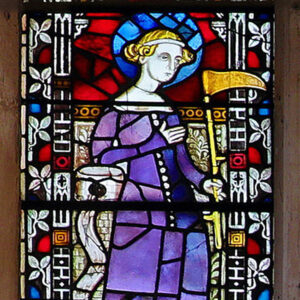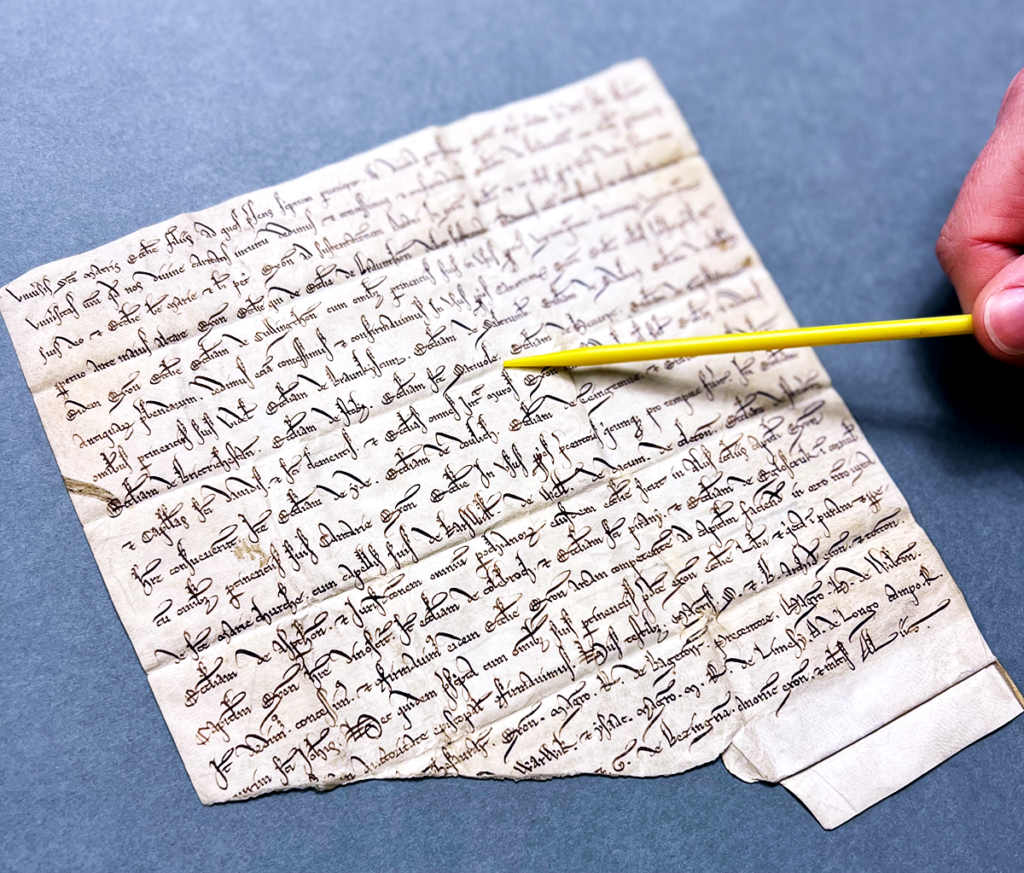
Sidwell is Exeter’s very own saint, venerated on 2nd August each year. She was an 8th century Christian martyr who, it is told, was beheaded by her father’s scythe-men at the insistence of her jealous stepmother. A holy well is reputed to have sprung up at the place where she died, in the area now known as St Sidwell’s.

Exeter Cathedral has a long association with St Sidwell’s, and the Cathedral Archives contains many documents recording the area’s history. St Sidwell’s had once been in the possession of Leofric (the first Bishop of Exeter, 1050-1072), and passed through several bishops. In the document shown here – dating from c.1225 – William Brewer, the Bishop of Exeter, grants St Sidwell’s (written in the Latin form ‘Sativole’) and several other churches and lands in Devon and Cornwall to the Dean & Chapter of the Cathedral, who remained lords of the manor there for many centuries.